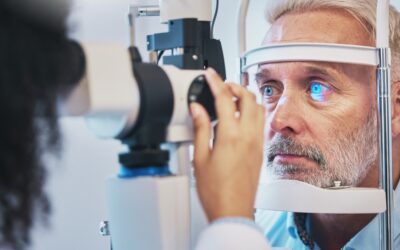Table of Contents
Imagine you are at a conference and the speaker is presenting a slideshow. His speech is tied in with the slideshow, so it’s important that you see it. All of a sudden, you can’t see the slideshow. You blink your eyes and try to clear your vision, but it’s still blurry. How long do you think you would be able to pay attention to the speech before you got distracted or stopped listening? That’s the issue that children with vision problems face at school.
As a teacher, you can recognize the signs of a student’s potential vision problems in the classroom so they have the best chance of correcting them and learning at their full capacity. Here’s what you should know.
Vision problems and school
According to the 2016 American Community Survey, over half a million children have vision problems. Sometimes, it’s pretty straightforward to notice these issues. Students squinting at the chalkboard or whiteboard or holding their books close to their faces are classic examples of obvious vision issues. But what about children who have vision problems and don’t show these clear signs?
Some behavioral and academic issues that are attributed to other problems can actually be signs of poor vision. For example, ADHD children are fidgety, have challenges paying attention and are often disruptive in class. However, what might seem like ADHD-related behavior can actually be vision-related.
If a child can’t see what you are teaching, they’ll have a hard time paying attention to it. If children are bored because they can’t see, many will start to act up and become disruptive and fidgety.
People also often write off academic problems as a child just being “behind” or below grade level. But again, if a child can’t see, how can you expect them to perform at grade level?
Athletics is yet another area in which poor vision can affect performance since hand-eye coordination is important for many sports. Children that seem to be clumsy or uncoordinated may just be having a hard time seeing the ball.
What can you do?
As a teacher, you have the opportunity to notice the signs and problems discussed above. If you see a number of these issues, you might first want to send your student to the school nurse to get a vision screening.
While this is a great first step, it’s even better for the child to get a comprehensive eye exam. This test not only checks vision but also the health of the eye. If the doctor finds a vision problem during the exam, they can prescribe corrective lenses.
Many parents may have concerns about the cost of this exam. After all, people often get sticker shock when they need glasses or contact lenses. There are other options though, including vision pre-paid vision plans like Vision Care Direct.
Vision Care Direct is owned by doctors, not insurance companies, and our focus is on making eye care affordable. We offer a wide variety of plans, which also include comprehensive eye exams. So, if a doctor finds a vision problem in your student, the good news is that their parents won’t experience sticker shock when they go to purchase glasses.
In fact, Vision Care Direct also offers great savings on both eyeglasses and contact lenses. Plus, because we don’t own stores or labs, parents can get these lenses wherever they wish, so students can choose the lenses that are right for them.
Learn more
You may be the first to notice vision problems in a student because of their problems in school. You can also be a great resource for parents by recommending options for their children’s vision care. Parents and teachers alike should know that Vision Care Direct is there to offer great options for pre-paid vision plans.
To learn more about how we can help your students thrive at school through better vision, contact us today.






















































